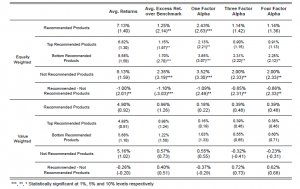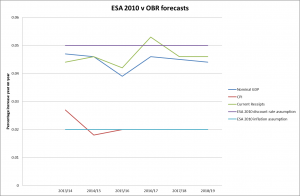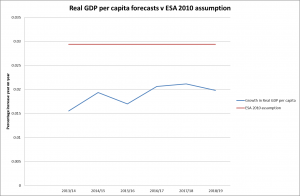 With the recent revelations about the tax affairs of Gabby Logan and Gary Barlow in the news, it seems a good time to focus on the pension scheme equivalent.
With the recent revelations about the tax affairs of Gabby Logan and Gary Barlow in the news, it seems a good time to focus on the pension scheme equivalent.
Asset-backed contributions or ABCs have been lurking in the background of pension scheme funding for a while (Marks and Spencer set up such an arrangement in 2007), but have really only come to prominence since 2010. As you can see, they had quite a few takers over the next three years:
The total number of ABCs has now grown to more than 60, with a value of more than £6 billion. The value of each has tended to be around 10-20% of total scheme assets.
So why is this? For employers the answer is easy:
- The employer can “pay” across an asset to the scheme while continuing to use it within its business.
- The future stream of payments to the scheme is capitalised to make an immediate increase to the scheme’s funding level, which both makes the company accounts look better (although the Financial Reporting Council have been looking hard at a number of these) and reduces its Pension Protection Fund levy.
- There is the potential to accelerate the tax relief on employer contributions if it is set up carefully.
- The new effective “recovery period” (ie the period over which the stream of payments is paid from the special purpose vehicle known as a Scottish limited partnership (SLP) into the scheme) is usually longer than that of the recovery plan it replaces. It may also be more “back end loaded”, ie with a lump sum at the end allowing lower payments in the short to medium term.
But for trustees it is less clear:
- The payments into the scheme are normally lower than they would be under a recovery plan which would not attract additional scrutiny from the Pensions Regulator.
- The “asset” the employer is offering should already have been priced into the funding negotiations as part of the assets of the company included within the trustees’ covenant review. The ability to gain access to this asset on the occurrence of certain trigger events is, in principle, no different from the employer allowing the scheme to take a charge over that asset. However there are likely to be more hurdles to realising the asset under an SLP-type arrangement, as these arrangements are inherently more complicated than a simple legal charge.
- There is usually no flexibility about the payments from such an arrangement which are targeted to meet a notional funding target many years in the future. By this time, the true funding target is likely to have changed, as will the value of the asset held in the SLP.
- In order to make the arrangement work, they have to be a corporate trustee, even if they have not previously felt the need to incorporate to carry out their duties.
In summary, this is a vehicle for getting around the restriction on employer-related investment (ERI) of 5% of total assets which has existed since the Pensions Act 1995 came in. The only exceptions previously were small self-administered schemes (SSASs) which could use company property and loans to the company as assets on the basis that all the people in them were directors of the company. Whether it achieves this or not is as yet untested in the courts, although there have been some very confident legal opinions expressed about the fact that the letter of the ERI legislation only refers to shares or other securities, which cannot exist in this case because:
- The SLP is an unincorporated body within the UK so it cannot issue shares. As one lawyer has said “the magic of a SLP is its distinct legal identity”.
- A partnership interest is not generally considered a share (which is why, the confident legal opinion goes, along with the safeguards written into the agreements, Scottish independence would not make these deals suddenly illegal – although this obviously begs the question of why then you would go to such great lengths to create a SLP in the first place).
The Pensions Regulator is clearly uncomfortable with these arrangements, sensing that they are just devices for driving a coach and horses through its code of practice on funding. However, they are not illegal, so the Regulator has been able to do no more than issue guidance to trustees and their advisers on asset-backed contributions, with a long list of risks that they pose and advice trustees would need to seek before agreeing to one. They correctly point out that an ABC is not a bond-like investment, as some have suggested (unless by bond you mean a corporate bond issued by the sponsor of the scheme, ie an investment which becomes riskier the worse your sponsor is doing – which is not normally the point of bond investment). But the real kicker is the requirement they have set for a separate underpin that would protect the scheme’s position eg “in the event that the courts find that ABCs are void for illegality or where there is a change in the law”. This could turn out to be very expensive for the 60 such arrangements already in place.
However, just for a moment, despite all memories of other situations where lawyers have told us that scheme documents are copper-bottomed but which have subsequently proved to have traces of straw (equalisation, for instance), let us assume that the ABC drawn up in the way the Regulator has suggested will benefit the schemes which participate. These arrangements may observe the letter of the legislation but they clearly do not observe their spirit. Just look at the typical structure of one:
And then tell me that it bears no resemblance to the kind of “tax management scheme” we have seen punished recently. Here is Chris Moyles’ one as an example:
More and more voices are questioning the tax relief that pensions receive (the Institute of Fiscal Studies being one recent example). Steve Webb has also indicated that he would like to see a reduction in tax relief on pension contributions for higher rate taxpayers. Is this really the time to be championing schemes which accelerate that tax relief even more?
















